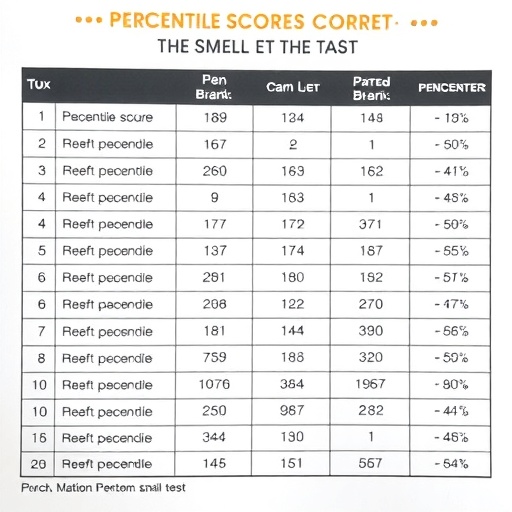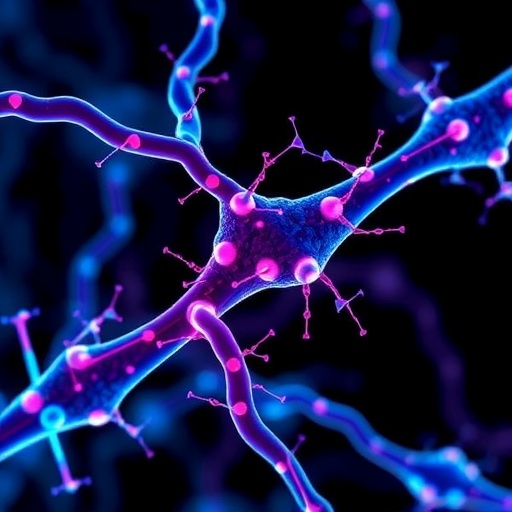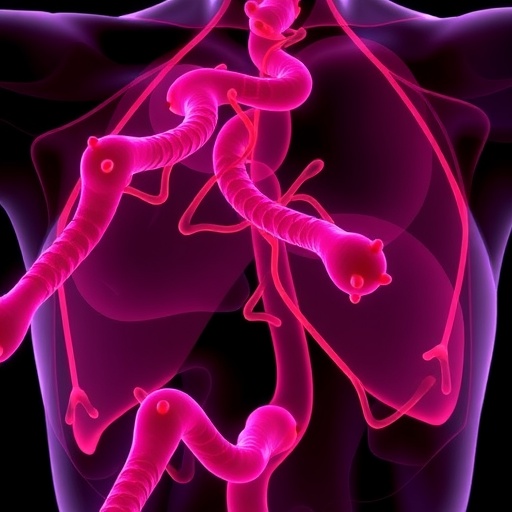In an era where neurodegenerative diseases pose an ever-growing medical challenge, the seemingly simple act of identifying odors has emerged as a critical diagnostic and prognostic tool. A groundbreaking study published in npj Parkinson’s Disease has standardised the evaluation of olfactory function among elderly populations, shedding new light on the complexities of sensory decline and its linkage with neurological disorders. This extensive work, involving nearly 17,000 individuals aged 60 and above, has meticulously crafted percentile scores for the revised University of Pennsylvania Smell Identification Test (UPSIT), offering an unprecedented benchmark in geriatric olfactory assessment.
Olfactory dysfunction has long been recognized as a harbinger of multiple neurodegenerative conditions, particularly Parkinson’s disease (PD). The nuanced loss of smell not only precedes motor symptoms by years but also correlates with disease severity and progression. Despite its clinical significance, the absence of robust normative data tailored for the elderly has remained a critical gap in both research and medical practice. This study’s large cohort addresses this void, providing clinicians and researchers with a finely calibrated framework to interpret UPSIT results in the context of age-specific sensory decline.
The UPSIT is one of the most widely used quantitative assessments of olfactory function, leveraging a scratch-and-sniff format to evaluate the identification of 40 distinct odors. Its application spans not only neurological laboratories but also clinical settings worldwide. This revised version of UPSIT enhances prior iterations by introducing adjustments that factor in cultural and demographic variables, thus ensuring higher diagnostic fidelity across diverse populations.
Obtaining percentile scores from such a vast sample size presents significant methodological challenges, including ensuring the representativeness of demographic variables like sex, ethnicity, and health status. The investigators employed rigorous statistical techniques to derive normative values that account for these confounders, refining the sensitivity and specificity of the UPSIT in detecting true olfactory impairment rather than variation due to extraneous factors.
Intriguingly, the data reveal complex patterns of olfactory decline that deviate significantly from a simple linear age-related trajectory. While olfactory function understandably deteriorates with advancing age, certain odors demonstrated markedly differential identification rates, suggesting that neural circuits and receptor pathways associated with these odors may be selectively vulnerable to aging or pathological processes. This nuanced insight opens up new avenues for targeted biomarker development.
The clinical implications extend beyond mere diagnosis. By providing a validated percentile rank system, the study empowers healthcare providers to contextualize an individual’s olfactory performance against a robust population baseline. This can aid in earlier detection of prodromal PD and other dementias or in monitoring disease progression, potentially refining therapeutic interventions and improving outcomes.
Furthermore, the accessibility and cost-effectiveness of the UPSIT render it an ideal candidate for large-scale screening programs. The establishment of normative data for the elderly encourages its integration into routine geriatric assessments, transforming a previously underutilized sensory test into a vital component of comprehensive neurological evaluation.
The uniform distribution of percentile scores across multiple age brackets also underscores the heterogeneity inherent within the aging population. Such variability demands personalized diagnostic thresholds rather than rigid cut-offs, prompting a paradigm shift towards precision medicine approaches in neurodegenerative diagnostics.
Methodologically, this study exemplifies the power of large-scale collaboration and data harmonization across multiple centers. The sheer breadth of data spanning over 16,000 individuals provides unparalleled statistical power, enabling detection of subtle trends and subgroup specificities that smaller cohorts would obscure. This approach heralds a new standard for future normative studies in sensory and cognitive domains.
On the mechanistic front, the findings inform hypotheses regarding olfactory receptor neuron turnover, central olfactory pathway degeneration, and interplay with systemic aging processes. The patterns of odor identification loss could reflect differential receptor gene expression or synaptic vulnerability within the olfactory bulb and related cortical areas, domains ripe for future neuroscientific exploration.
The integration of this normative dataset with emerging biomarkers such as alpha-synuclein deposition or neuroimaging correlates could yield multi-modal diagnostic algorithms, enhancing predictive accuracy for PD and atypical parkinsonian syndromes. The study, therefore, represents a critical foundational step towards sophisticated, multi-layered diagnostic frameworks.
Additionally, the study’s findings have broader societal implications. Given the projected increase in the elderly population globally, scalable and reliable tools for early disease detection are imperative. Olfactory testing, facilitated by these normative percentiles, stands out as a non-invasive, rapid, and broadly implementable solution, potentially easing the burden on healthcare systems by enabling earlier, better-targeted interventions.
It’s also worth noting the psychological and quality-of-life dimensions associated with olfactory decline. Loss of smell significantly impacts nutrition, safety, and social interactions in older adults. Providing clinicians with robust tools for identifying and monitoring olfaction can foster holistic care approaches aimed at mitigating these negative sequelae.
The meticulous statistical modeling employed in establishing percentile ranks incorporated covariate adjustments and sensitivity analyses, ensuring the reproducibility and generalizability of results. These technical rigor elements distinguish this work from previous studies with limited sample sizes or methodological constraints, reinforcing its authority as a clinical reference.
Finally, this landmark research invites future interdisciplinary collaborations that combine epidemiology, neurobiology, clinical neurology, and health policy. Its comprehensive dataset creates opportunities to link olfactory function with genetic polymorphisms, occupational exposures, or lifestyle factors influencing neurodegeneration risk, offering exciting frontiers for personalized medicine.
In conclusion, this study’s expansive normative data for the revised University of Pennsylvania Smell Identification Test represents a pivotal advancement in geriatric sensory assessment, enriching clinical diagnostics and propelling forward research on the early detection of neurodegenerative diseases. By elucidating the intricate dynamics of olfactory decline across thousands of elderly individuals, it paves the way toward a new era of precision neurology grounded in sensory biomarkers.
Subject of Research:
Olfactory function assessment in elderly populations and its relation to neurodegenerative diseases, primarily Parkinson’s disease.
Article Title:
Percentile scores for the revised University of Pennsylvania Smell Identification Test for 16,972 individuals 60 years of age and older.
Article References:
Pierz, K.A., Aamodt, W., Gochanour, C. et al. Percentile scores for the revised University of Pennsylvania Smell Identification Test for 16,972 individuals 60 years of age and older. npj Parkinsons Dis. 11, 280 (2025). https://doi.org/10.1038/s41531-025-01095-9
Image Credits: AI Generated
Tags: clinical significance of smell lossgeriatric sensory declinelarge cohort studies in neurodegenerative researchneurodegenerative disease diagnosisnormative data for elderly populationsolfactory dysfunction and neurological disordersolfactory function in Parkinson’s diseaseParkinson’s disease olfactory symptomspercentile scores olfactory function assessmentsensory assessment in agingUniversity of Pennsylvania Smell Identification TestUPSIT olfactory test standardization





